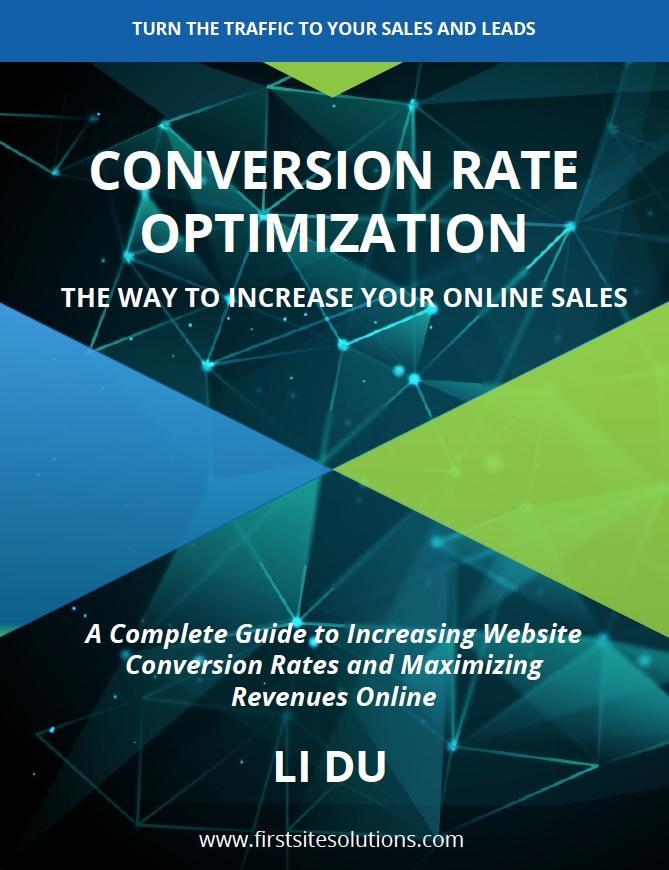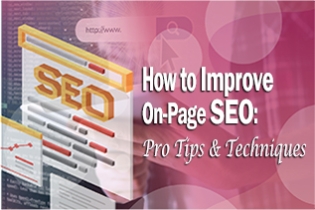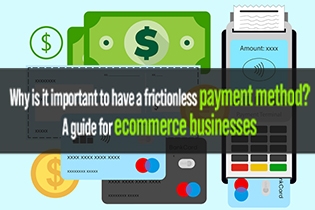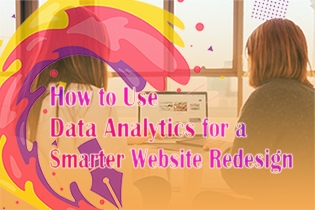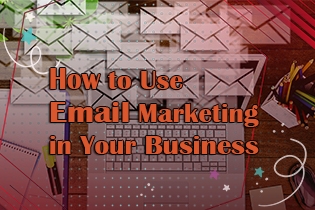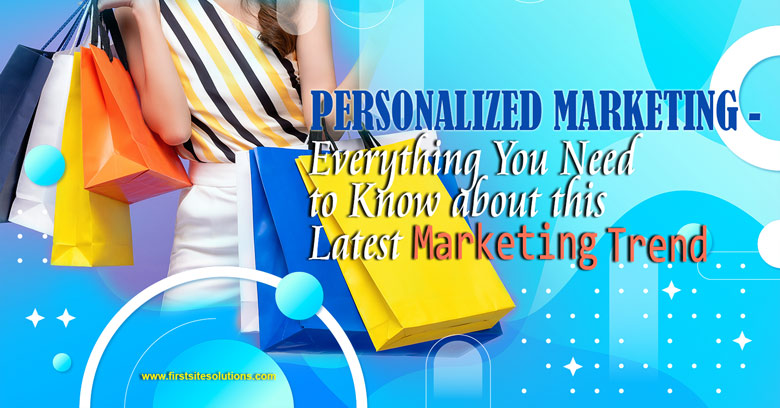
Personalized marketing has grown considerably over the past few years. Let’s take a closer look at trends, strategies, and tools that can help boost ecommerce conversions.
Christmas is just around the corner. And the thought of buying the perfect gift for every member of my family feels so overwhelming at times. Don’t get me wrong. I love shopping for gifts. It’s just that I can’t seem to align with their preferences.
Dealing with a hit-or-miss strategy is difficult, especially during the holidays. So yeah, keeping everyone happy can be somewhat confusing. Wouldn’t it be easier if Santa just told me what they want?
But this is precisely why businesses are investing in personalized marketing.
Believe it or not, personalized marketing is a game-changer in the world of digital marketing. As newer trends evolve, brands are getting smarter. They are finding effective ways of enhancing customer experience through personalized marketing.
Say hello to the latest member of the marketing family
Instead of focusing on delivering en-mass messages common in traditional marketing practices, brands have taken on an approach designed with the individual customer in mind.
Personalized marketing, also known as one-to-one marketing, is a marketing strategy where businesses utilize data analysis and digital technologies to create personalized messages or product suggestions for their customers.
Is this really necessary?
I mean, I'm already dealing with so many types of marketing. Do I need to take on one more project?
If you’re looking for a one-word answer, then it’s yes. Personalization is something that more and more customers are demanding. They want to be pampered and sought after. In fact, it’s the latest trend. And in order for businesses to remain profitable, they know how important it is to stay up to date - and make consumers happy.
An Epsilon survey of 1,000 consumers aged 18-64 revealed that 90% of consumers say they find personalization appealing. 80% agree they’re more likely to interact with brands that offer personalized experiences. In fact, it is one of the key factors that help boost their buying intent.
Barilliance.com says customers who click on recommendations have shown a 70% higher purchase rate.
More interestingly, according to the State of the Connected Customer report, 63% of Millennials and 58% of GenX are willing to share personal data in exchange for personalized offers and discounts. For many, it’s merely a small price to pay for an enhanced in-store or online shopping experience or for ideal product recommendations that match their needs.
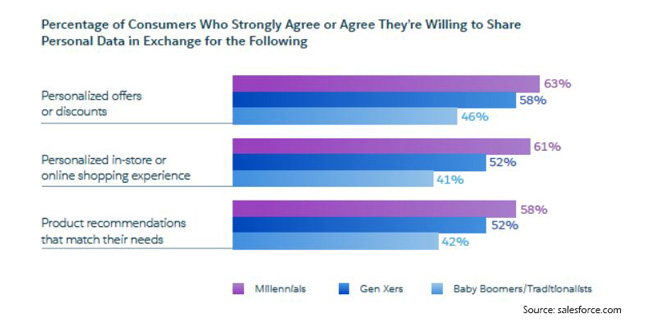
But the best part is that 72% of consumers actually expect companies to understand their needs and expectations!
Yikes!
I hate to break it to you, but if you don’t start implementing personalization strategies pronto, you’re heading for trouble. Your customers will simply find other brands that are. And guess what, they’re your competitors (No surprise there)
Will personalization strategies be worth the time and effort?
According to evergage.com, almost 90% of US marketers observed significant improvements by implementing personalization strategies. Some claim it helped slash acquisition costs by half and increased the efficacy of marketing spend up to 30%.
So while customers receive relevant content, their engagement level increases, and the possibility of conversions significantly improves. Seems like a win-win situation.
Ok, so how does it work?
By collecting and analyzing a customer’s data based on previous search and purchase history, companies can then align products and services that match their preferences. Implementation of such strategies helps brands to engage with current or potential customers.
Here is an example to help you understand how things work. A clothing retail brand that a customer shops at knows that she frequently searches for size 8 outfits, her favorite color is black, and her zip code. This information offers a range of marketing possibilities, such as size-specific personalized marketing offers, new outfits in black, seasonal suggestions based on the location, additional product recommendations based on other items the customer has just purchased, etc.
So you can see why personalization has become a top priority for marketers. However, to get the most out of it, you need to know how to implement and execute strategies properly.
How to create a robust personalized marketing strategy
Your goal is to devise a personalization strategy that helps build better one-on-one customer relationships that not only last longer but lead to higher conversion rates.
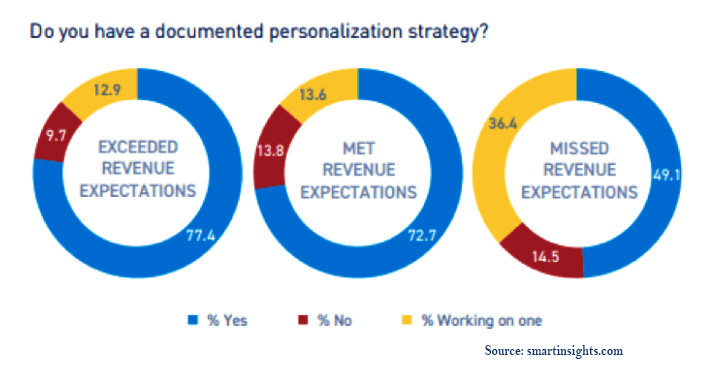
However, methods vary from business to business. But the key elements of any successful personalized marketing strategy should include the following:
1. Recognize the customer’s needs
From the statistics mentioned above, you’ll recall that customers expect you to understand their needs. And that begins with gathering information about the customer, such as demographics, items they clicked on, time spent on site, browsing behavior, purchase history, abandoned shopping carts, etc.
Capture customer data at critical points in their buying journey to acquire holistic customer intelligence, including understanding what drives them.
Note:
- what data you already have
- what you will need to acquire
- the sources of data
2. Analyze the collected information
Now comes the essential part- centralizing all the data from various touchpoints and building analytical capabilities to make sense of it all. With the right technologies, businesses can utilize the data to resolve customer pain points better, improve online experiences, and match customer needs and expectations.
3. Act insightfully
Collecting, organizing, and analyzing data will help make more informed marketing decisions. Leveraging acquired information can help serve customers better, offer relevant and personal recommendations, and enhance engagement.
4. Help scale the business
Successful personalization means thinking ahead. What add-ons or upgraded versions might your customer need? If they’ve already bought something, marketers need to predict what items they will demand next and offer products even before the customer realizes they need it.
Personalized marketing also gives brands the opportunity to expand product lines and services. By anticipating future needs, they can drive the business forward.
Don’t forget: Optimization is crucial
Personalization is an on-going process to ensure customer’s experiences are constantly improving. This requires measuring outcomes and evaluating results with historical data.
By understanding and identifying what works and what doesn’t, you can optimize efforts and improve key performance metrics, including conversion rates, cost per acquisition, lead generation, repeat purchases, average order value, customer lifetime value, etc.
An optimized, personalization marketing strategy can help:
- Understand customer preferences better
- Identify market competitors
- Boost SEO efforts
- Improve brand perception, loyalty, and engagement
How can you optimize personalized marketing strategies?
There are several ways you can improve your approach to personalization. The key is to implement data-driven strategies that can help you deliver a seamless, personalized experience across all channels.
Consider the following optimization ideas:
- A/B testing and MVT (multivariate testing) can identify which strategies are generating the best results.
- Invest in personalization tools to help measure the effectiveness of current campaigns.
- Implement segmentation strategies to facilitate the production of content that effectively targets different people throughout the various stages of the customer buying journey.
- Customize conversion funnels for specific target audiences based on their behaviors and touchpoints.
- Use landing pages and forms to capture relevant information from leads, allowing businesses to deliver more tailored messages and product recommendations.
- Utilize more than one channel to reach out to and interact with customers (e.g., via the website, email, custom videos, etc.).
- Incorporate CTAs that help grab consumers' attention and tell them precisely what you want them to do.
- Enhance UX and site usability to ensure visitors easily navigate and use your website and/or app from any device.
- Improve SEO campaigns to boost rankings on SERPs so that potential customers can discover your website, products, and services.
Various personalized marketing campaigns you should use
There is more than one way to personalize interactions with your prospects, but an omnichannel approach is more effective. The more channels you add to your marketing mix, the greater the chances of developing positive interactions. Here are a few examples of personalization techniques that have received excellent results:
1. Emails
A great way to make email campaigns more effective is to ensure the content connects with the target audience. That is only possible if you understand who is receiving the email and why. Segmenting email lists and individualizing email messages are two of the most effective personalization tactics, 51% and 50%, respectively.
Often, marketers use customer information from sign-up forms to make emails more relevant. Marketers find that using targeted, personalized emails are more effective than general ones- 82% reported an increase in open rates. But simply personalizing email subject lines can lead to higher open rates—as high as 50%!
2. Website product recommendations
Businesses need to offer prospects suggestions that customers are more likely to be interested in. This is one of the best ways to keep potential customers hooked to a brand.
75% say they're likely to buy from a brand that recognizes them by name or recommends products/services based on previous purchases. In comparison, 77% say they will gladly choose, recommend, or pay extra for personalized service or experience.
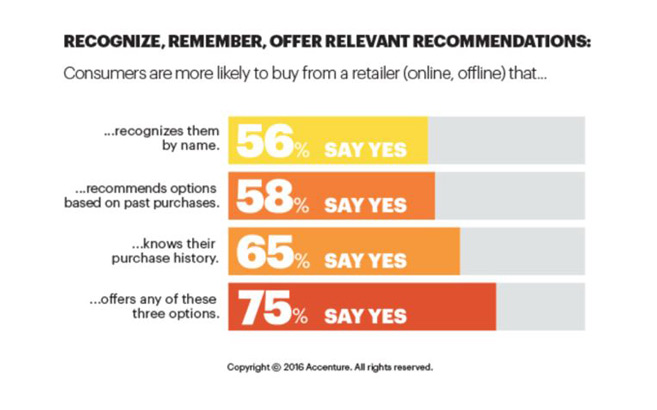
3. Customized video messages
Marketers know that people are more likely to watch a video than read a blog. So merging the top two marketing trends (personalization and video) into one platform is a smart marketing move. Some brands have received an 8x improvement on CTRs with personalized video content over standard emails.
4. Personalizing on social media
Social media has become a central component of many marketing activities. With 3.81 billion people active on social media, personalizing social media interactions is bound to generate more engagement, leads, and sales.
Marketers can easily collect and analyze customer data from multiple social media channels, improving communications, and driving conversions. And since personalized content is more relevant, 56% of marketers witnessed higher response and engagement, states eMarketer.
Brands in social media need to create more tailored content to their customer personas and align it with where customers are in their purchasing journey.
Take, for example, Lexus's personalized marketing campaign on Facebook in 2014. It created over 1000 videos, sending different versions depending on demographics, location, likes, and interests. Lexus was able to reach over 11M unique Facebook users, increasing engagement by an impressive 1678%.
Types of tools for the best personalization efforts
With the right personalization tools, businesses can effortlessly create personalized content that connects with the right target audience. There are a lot of tools that you may need. Popular choices include Google Analytics, Heap Analytics, and Crazy Egg.
Here is a list of some ways different types of tools can help with personalization:
- Analytics
There’s a considerable amount of data that needs to be monitored before a strong personalized campaign can be built.
- Email marketing
Email marketing is a great cost-effective marketing strategy. Segmenting the email list and curating content according to the recipient's demographics, your efforts will pay off.
Personalizing the subject line and content is a great way to connect with the recipient. Using email marketing tools can help automate and streamline processes.
- Data management
It’s not only about collecting data from various sources. It needs to be organized in order to reach targeted user segments. Analyzing and optimizing campaigns can help produce better results down the road.
- Customer relationship management
Customer information is an essential component of personalization tactics. However, data from various touchpoints must be centralized, including lead capture forms, sales calls, or third party data providers. With access to current customer information, all strategies will remain on target.
- Post-click landing page platform
After receiving personalized content, prospects are more likely to click. Post-click landing pages should be designed so that potential customers complete the action, whether that’s signing up for a newsletter, downloading content, or buying a product. Now you need to think of how to guide customers through the next stage of the sales funnel.
Final thoughts
Today’s marketers need to prepare for tomorrow’s customers- and personalization is on the top of the list.
It’s time to perfect and tweak your personalized marketing strategies with more customer data and automate processes with the latest tools. Offering relevant suggestions when customers need it can significantly sway potential prospects into a paying customer.
But your efforts should not stop here. Now you need to focus on converting your one-time customer into a loyal fan. After all, a successful campaign is one that continuously drives positive results for your business.


